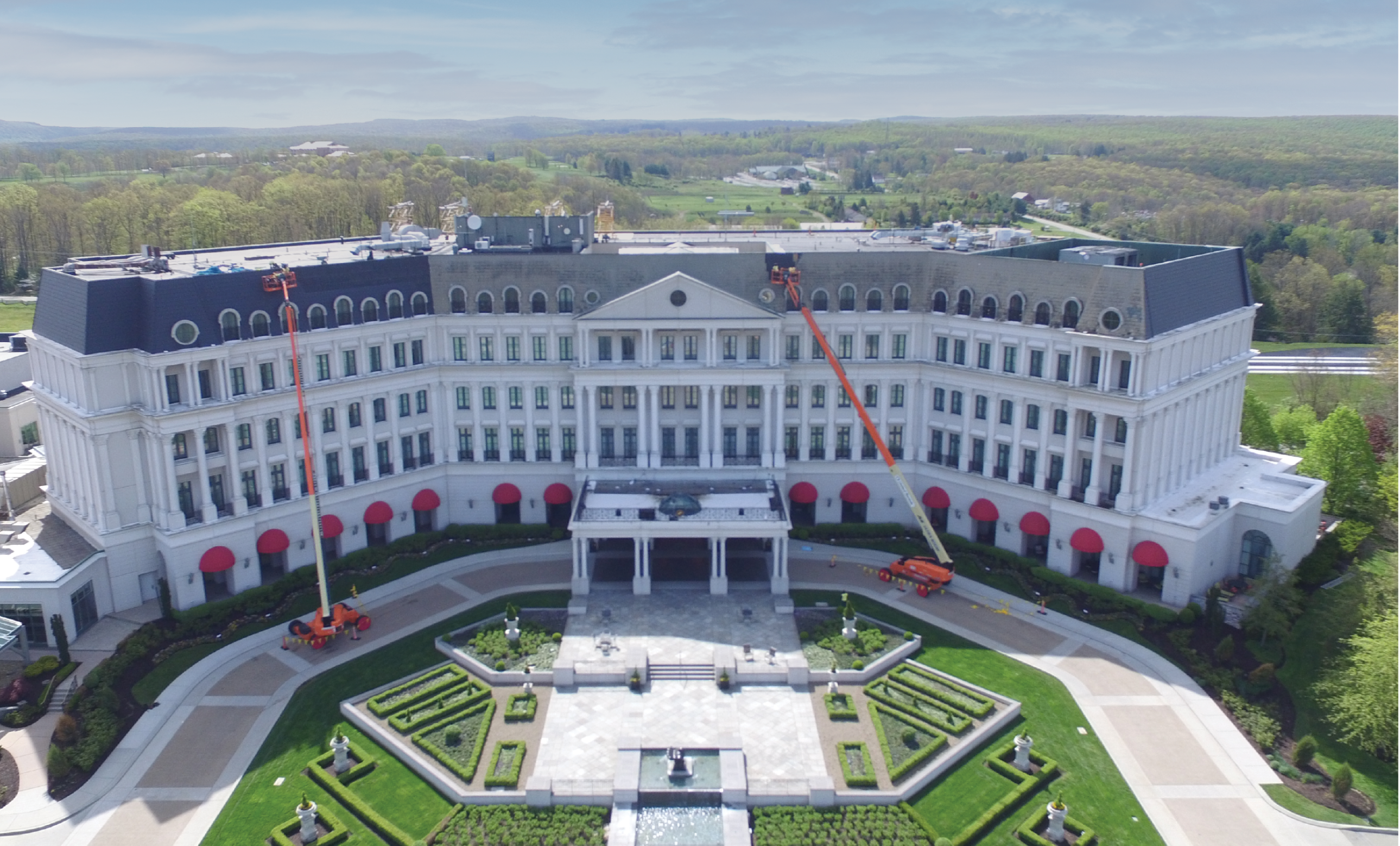Musculoskeletal disorders prevalent among construction workers
Work-related musculoskeletal disorders account for 33% of all job-related injuries and illnesses and are especially prevalent in the construction industry, according to constructionexec.com.
Musculoskeletal disorders are injuries and disorders that affect the human body’s movement or musculoskeletal system, involving the tendons, nerves, muscles, joints, cartilage and supporting structures of the arms, legs, neck and lower back. These disorders often are caused or aggravated by prolonged exposure to intense and repetitive movements. Physical actions such as heavy lifting, persistent grasping, awkward body postures for extended periods of time and forceful vibrations from powerful machinery can lead to debilitating musculoskeletal disorders that can significantly affect a construction worker’s physical and mental health.
For construction workers, the areas of the body most affected include the shoulders, neck, back, and any damage or disorder of the joints or other tissues. Some of the more common musculoskeletal disorders include tension neck syndrome, digital neuritis, tendonitis, ligament sprain and muscle strain.
Musculoskeletal disorders affect millions of construction workers throughout the world and cost companies billions of dollars. The Laborers’ Health & Safety Fund of North America reports 40% of construction workers surveyed said working while hurt decreases productivity and results in more severe injuries in the future.
According to the Bureau of Labor Statistics, across all industries, musculoskeletal disorders are the largest category of workplace injuries and responsible for almost 30% of all workers’ compensation costs. The average musculoskeletal disorder has a direct cost of about $15,000.
Hiring and training strategies for the construction industry

|
During a press conference at the International Builders Show in Orlando, Fla., Ed Brady, CEO of the Home Builders Institute, a Washington, D.C.-based construction training nonprofit, said a “long-term structural crisis” within the building industry is preventing it from adequately attracting and retaining workers, according to constructiondive.com.
Brady said higher compensation is not the only thing potential workers seek.
“Beyond better paychecks, people are looking for the best overall workplace environment when they choose what careers to pursue,” he said. “Today’s workers want greater respect, stability and opportunity.”
HBI’s Construction Labor Market Report, which is based on data and research from the National Association of Home Builders, estimates the residential construction industry will need to train and place 2.2 million new workers during the next three years to meet the demand for new housing in the U.S.
During the press conference, Brady shared five hiring and training strategies for the construction industry.
- Recruit more women.
- Train and place more minority, lower-income and second-chance workers.
- Provide education and training for veterans and transitioning military.
- Develop national immigration policies that support workforce growth.
- Change entrenched and misguided perceptions of careers in construction.
A recent study by the Washington, D.C.-based Building Talent Foundation shows why tradespeople stay on the job and why they leave.
The top reason survey respondents gave for staying in their jobs was they had opportunities for career advancement, training and learning new skills. Other reasons included being treated well by their bosses and feeling valued and respected at work. The top reason people wanted to leave their jobs was a lack of career advancement, training and development.
NRCA offers resources to help contractors with worker recruitment, including workforce recruitment materials available at nrca.net/workforce-recruitment and its Careers in Roofing website, careersinroofing.com.
Focusing on safety for an aging construction workforce
The average U.S. worker is getting older—the median age of the labor force rose from 39.3 in 2000 to 42 in 2020, according to constructionexec.com. The average age of construction workers is 42.5—up from an average of 40.5 in 2013.
As workers age, healing can be more difficult, and injuries can linger. Older workers are more likely to get hurt badly from falls, suffer from more chronic conditions and are at a greater risk of death from occupational accidents. Additionally, their injuries typically cost more to treat and require more time to heal.
Following are ways to ensure the safety of older construction workers.
- Recognize no one job fits all. The National Institute for Occupational Safety and Health recommends employers allow workers to perform to their strengths by self-determining job tasks as much as the position will allow—for example, complete tasks on the ground rather than on a 20-foot ladder.
- Understand the effects of strenuous physical demands. Work pace is not associated with an increased rate of accidents, but highly physical work increases bodily stress. Allowing workers the flexibility to reduce the physical rigors of their work can reduce the likelihood of injury.
- Invest in worker training. No matter how many years employees have been on the job, everyone can use refreshers. In fact, having a lot of experience sometimes can cause complacency, so keeping up with training is crucial.
- Make accommodations for returning workers. A Canadian study revealed there seems to be no place for injured construction workers when it is time to return to work, and few construction companies have return-to-work policies to support disabled persons. Reasonable accommodations and return-to-work processes can facilitate a productive return to typical duties.
- Create a safe working environment. Good housekeeping on job sites is crucial for all workers. Provide adequate lighting; keep work surfaces free of oil, water, snow and other hazards; and adhere to safety protocols such as appropriate anchoring to prevent falls. Have frequent on-site digitized safety inspections and share photos or videos of site conditions to help identify issues.
- Provide resources. Telephone or online resources for workers with health concerns can promote worker health and safety and raise awareness of issues to supervisors. Although older construction workers may face certain safety challenges, no age demographic is without risks, and companies should do what they can to keep all employees safe.
OSHA launches program to protect workers from heat hazards

|
Heat illness affects thousands of indoor and outdoor workers each year and can lead to death. The National Emphasis Program is meant to immediately improve enforcement and compliance efforts while continuing long-term work to establish a heat-illness prevention regulation.
As part of the program, OSHA will proactively initiate inspections in more than 70 high-risk industries in indoor and outdoor work settings when the National Weather Service has issued a heat warning or advisory for a local area. On days when the heat index is 80 F or higher, OSHA inspectors and compliance assistance specialists will engage in proactive outreach and technical assistance to help stakeholders keep workers safe. Inspectors will look for and address heat hazards during inspections regardless of whether the industry is targeted in the National Emphasis Program.
“Our goal is to make it safe for workers in hot indoor and outdoor environments, so that they can return home safe and healthy at the end of each day,” says Assistant Secretary for Occupational Safety and Health Doug Parker. “Working together, we can ensure workers know their rights and employers meet their obligations in order to protect workers from the growing dangers of extreme heat.”
In fall 2021, OSHA published an Advance Notice of Proposed Rulemaking to initiate the rulemaking process toward a federal heat standard. NRCA responded to the Advance Notice of Proposed Rulemaking with written comments and participated in OSHA’s May 3 stakeholder meeting during which OSHA discussed its ongoing activities to protect workers from heat-related hazards.
Sika Sarnafil® announces management changes

|
Sika Corp., Canton, Mass., has announced several personnel changes.
Brian Whelan has retired as executive vice president and was succeeded by Sebastien Godard. Whelan served more than 40 years in a variety of roles at Sika Sarnafil. He will stay on in a part-time capacity doing independent consulting for the Sika Roofing business. Godard is an experienced manager within Sika who most recently served as general manager of all Sika businesses in Sweden.
“I worked side by side with Brian for most of 2021 to learn from his many years of experience and expertise, and I am honored to fill the big shoes he established in our roofing business and the industry at large,” Godard says.
In addition, Stan Graveline, formerly Sika Sarnafil’s senior vice president of technical services and sustainability, has assumed leadership of American Hydrotech Inc., a recent Sika acquisition, and Michael Darsch was named vice president of technical services for the Sika Roofing business. John McGill has succeeded Darsch as director of technical services—East Area.
Harness Software joins NRCA’s One Voice initiative

|
NRCA has announced Harness Software, Newark, Del., has joined its One Voice initiative as a partner member.
NRCA’s One Voice initiative is a transformational approach to addressing the roofing industry’s most critical issues and concerns—with one voice—to secure its future.
NRCA invites manufacturers, distributors, architects, engineers, consultants and service providers to fully engage with NRCA, as partners, and actively address the industry’s most pressing issues, including workforce and work certification; effecting change in Washington, D.C.; building codes and insurance; and increasing professionalism in all industry sectors.
Additional information about NRCA’s One Voice initiative, including a list of the 45 current member partners, is available at nrca.net/onevoice.
Enrollment in skilled trades programs rises

|
Since the COVID-19 pandemic began, more than 1 million students have decided not to go to college and opted to work instead.
Data from the National Student Clearinghouse show how community college enrollment shifted during the pandemic. The percent change in community college enrollment from 2019 to 2021 fell for associate degree programs such as business, social sciences and communications. However, construction trades grew 5% and architecture and related services grew 4%.
A September 2021 survey by the Associated General Contractors of America found 89% of contractors were having a difficult time finding workers who were trained for the job. Sixty-one percent of contractors reported project delays because of workforce shortages.
Tony Chaffin, leader of the construction program at Texas State Technical College, Waco, says the demand for workers is “huge.”
“We have contractors calling us weekly: ‘Do you have anybody who can work?’” he says. “I mean, they just want people.”
AGC says investing in skilled trades programs is crucial for addressing the shortage of qualified workers.
“The federal government only spends $1 on career training for every $6 it puts into college prep,” says AGC CEO Steve Sandherr. “This funding gap for career training is one of the main reasons so many contractors have a low opinion of the current pipeline for preparing new craft and construction professionals.”



